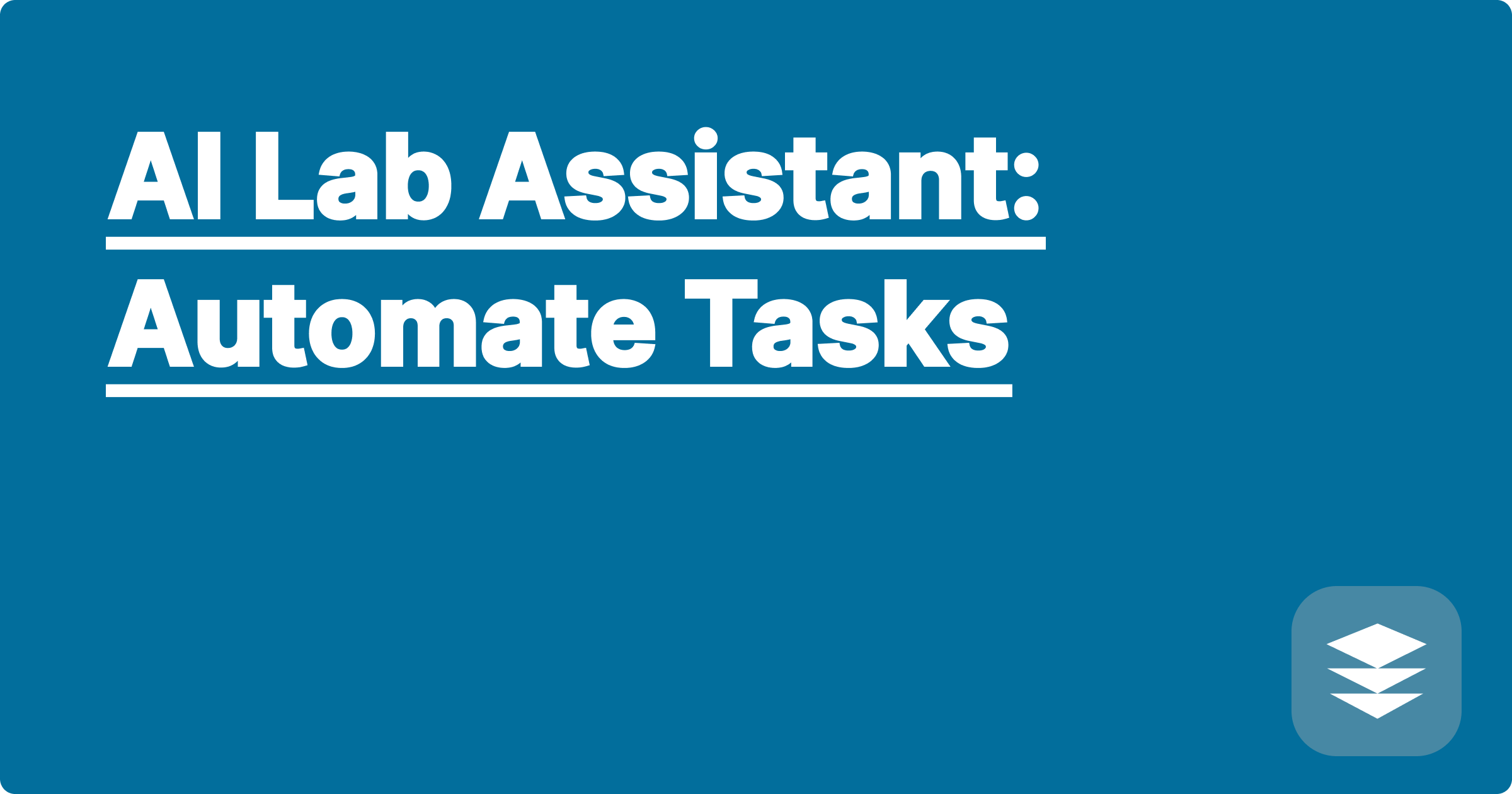
The relentless pace of STEM research demands efficiency and precision. Researchers often find themselves bogged down by repetitive tasks, hindering their ability to focus on core scientific inquiries. Artificial intelligence offers a transformative solution, empowering researchers to automate these mundane activities and accelerate the pace of discovery. AI-powered lab assistants can handle everything from data analysis and literature reviews to experimental design and report generation, freeing up valuable time and mental energy for researchers to delve deeper into their work.
This shift towards AI-augmented research is not just a trend; it's a fundamental change in how scientific breakthroughs are achieved. For STEM students and researchers, mastering these AI tools is no longer optional but essential for remaining competitive in a rapidly evolving landscape. Embracing AI empowers researchers to enhance their productivity, improve the accuracy of their work, and ultimately contribute more meaningfully to their fields. This blog post will explore how AI can be effectively integrated into the STEM workflow, transforming the way research is conducted and accelerating scientific progress.
STEM research involves a multitude of complex and time-consuming tasks. Consider the process of conducting a literature review, which often requires sifting through thousands of research papers, extracting relevant information, and synthesizing it into a coherent narrative. This process can take weeks, if not months, diverting valuable time from experimental design and data analysis. Similarly, data analysis itself can be a laborious undertaking, involving data cleaning, normalization, statistical analysis, and visualization. These repetitive tasks, while necessary, can often feel like a bottleneck, slowing down the overall research process and hindering scientific progress. Furthermore, the sheer volume of data generated in modern research can be overwhelming, making manual analysis impractical and prone to human error. Automation offers a solution to these challenges, enabling researchers to streamline their workflows and focus on the more creative and intellectually demanding aspects of their work.
AI tools like ChatGPT, Claude, and Wolfram Alpha offer powerful capabilities for automating various aspects of the STEM research workflow. ChatGPT and Claude, for instance, can be leveraged for tasks like literature review automation, generating summaries of research papers, and even assisting with the drafting of research proposals and manuscripts. These language models can process vast amounts of textual data, identifying key themes, summarizing findings, and even suggesting potential research directions. Wolfram Alpha, on the other hand, excels at computational tasks, enabling researchers to perform complex calculations, solve equations, and generate visualizations. By integrating these tools into their workflow, researchers can significantly reduce the time spent on repetitive tasks and focus on the more analytical and creative aspects of their research.
Let's consider the example of automating a literature review using ChatGPT. Begin by clearly defining the research question and the scope of the review. This will help guide the AI and ensure relevant results. Next, gather a collection of relevant research papers in a format that ChatGPT can process, such as plain text or PDFs. You can then prompt ChatGPT to summarize each paper, extract key findings, and identify common themes. For example, you might ask ChatGPT to "Summarize the main findings of this paper and identify the key methodologies used." Iteratively refine the prompts to obtain more specific and nuanced information. Once ChatGPT has processed the papers, you can further prompt it to synthesize the information, compare and contrast different studies, and even identify gaps in the existing research. This automated approach can significantly accelerate the literature review process, providing researchers with a comprehensive overview of the field in a fraction of the time it would take manually.
Consider a researcher studying the effects of a particular drug on cell growth. They could use Wolfram Alpha to calculate the required drug concentrations for different experimental conditions based on established formulas like the C1V1 = C2V2 dilution equation. They could also use Wolfram Alpha to analyze experimental data, performing statistical tests like t-tests or ANOVA to determine the significance of their findings. Furthermore, they could use ChatGPT to generate a concise summary of their research findings for inclusion in a research paper or grant proposal. For example, they could provide ChatGPT with their experimental data and ask it to generate a paragraph summarizing the key results and their implications.
To effectively leverage AI in STEM education and research, it's crucial to develop a strong understanding of the capabilities and limitations of different AI tools. Experiment with different prompts and parameters to optimize the output for specific tasks. Critically evaluate the results generated by AI, recognizing that these tools are not infallible and may require human oversight and interpretation. Furthermore, it's essential to maintain academic integrity by properly citing and acknowledging the use of AI tools in research. Transparency about the role of AI in the research process is essential for ensuring the credibility and reproducibility of scientific findings.
Finally, embracing AI in STEM research requires a shift in mindset. Researchers need to view AI not as a replacement for human intellect but as a powerful tool that can augment their capabilities and accelerate the pace of discovery. By integrating AI into their workflows, STEM students and researchers can unlock new levels of productivity, efficiency, and ultimately, scientific impact. Continuously exploring new AI tools and techniques, and staying abreast of the latest advancements in the field, will be crucial for maximizing the benefits of AI in STEM research and education. The future of STEM is intertwined with the intelligent use of AI, and those who embrace this transformative technology will be best positioned to drive scientific progress in the years to come.
AI Physics Solver: Ace Your HW
AI Lab Assistant: Automate Tasks
STEM Success: AI-Driven Learning
AI Chemistry Solver: Get Help Now
AI Data Viz: Visualize Your Data
Boost Your Grades: AI Study Tools
AI Research Assistant: Find Sources